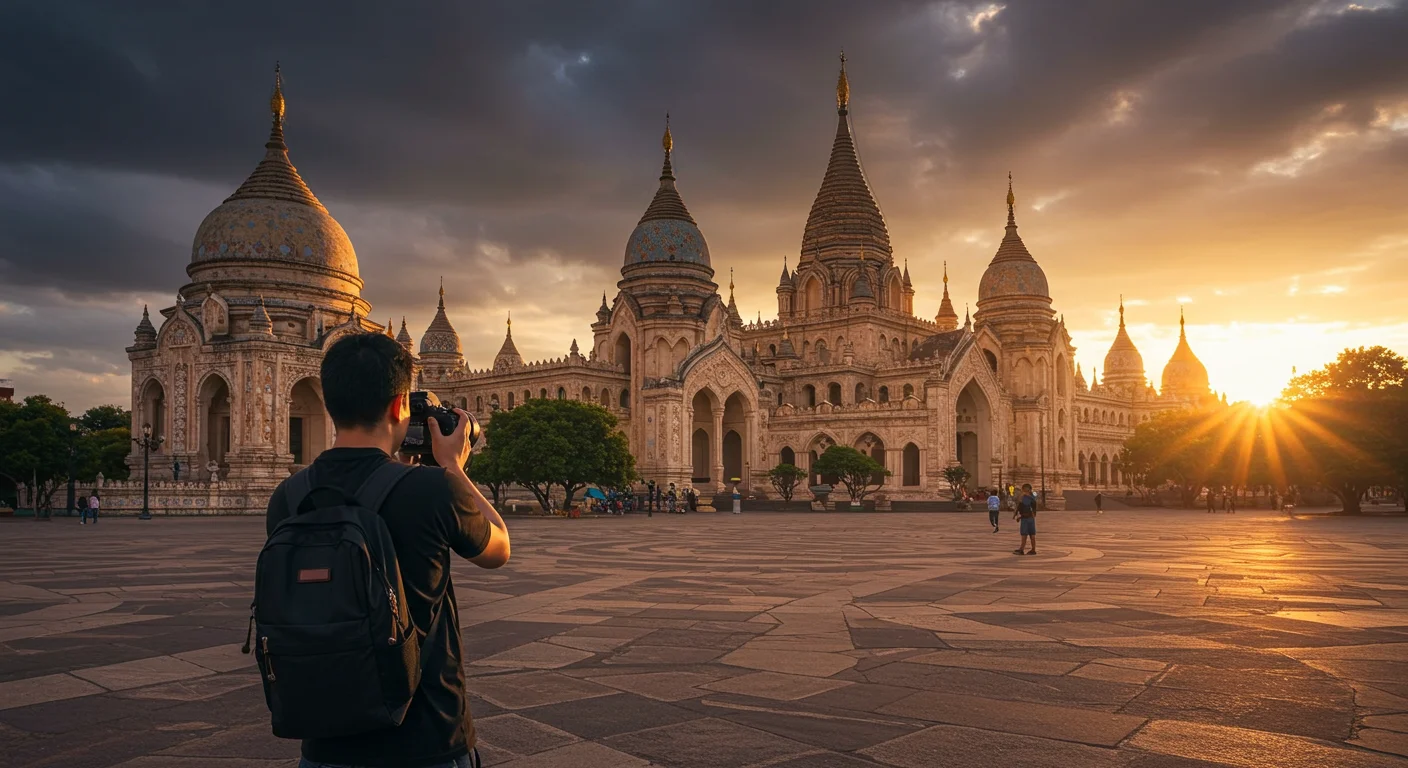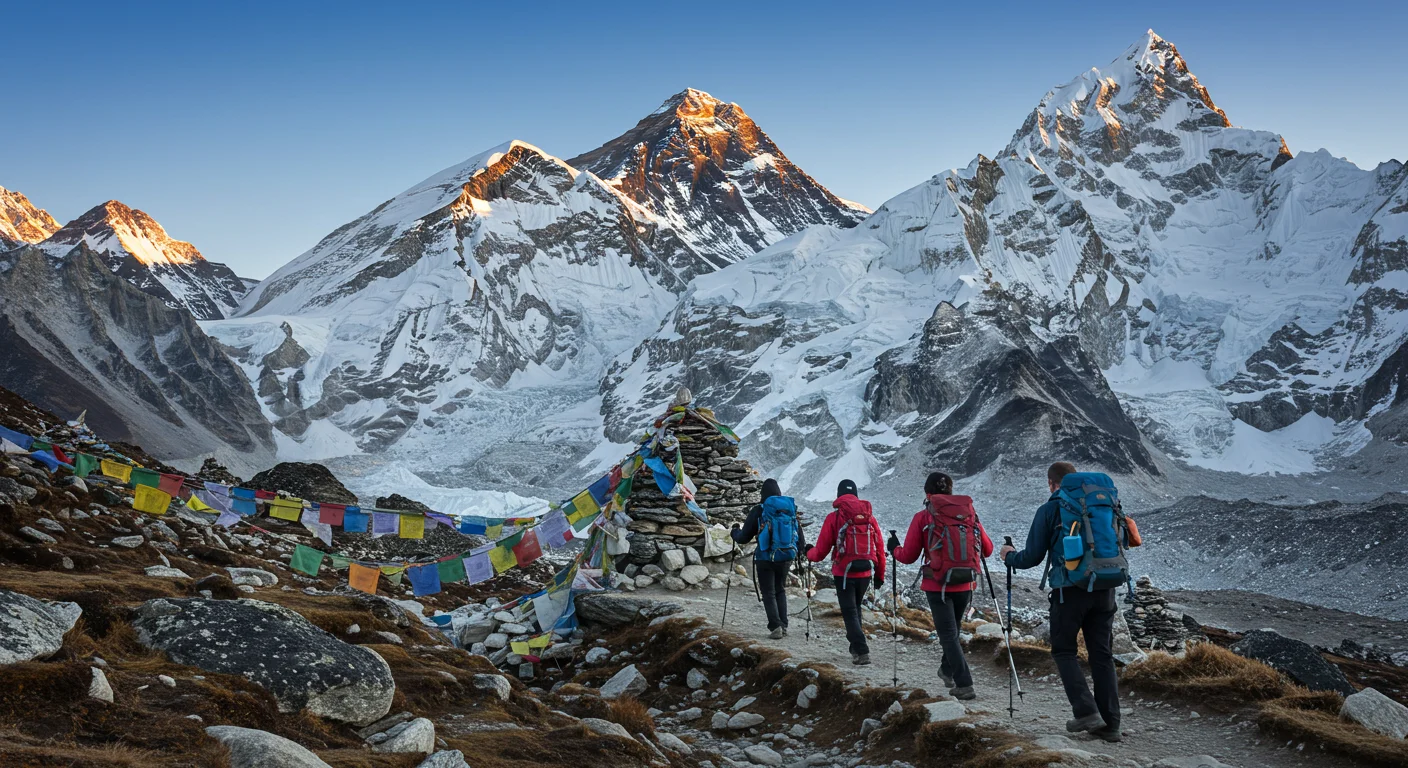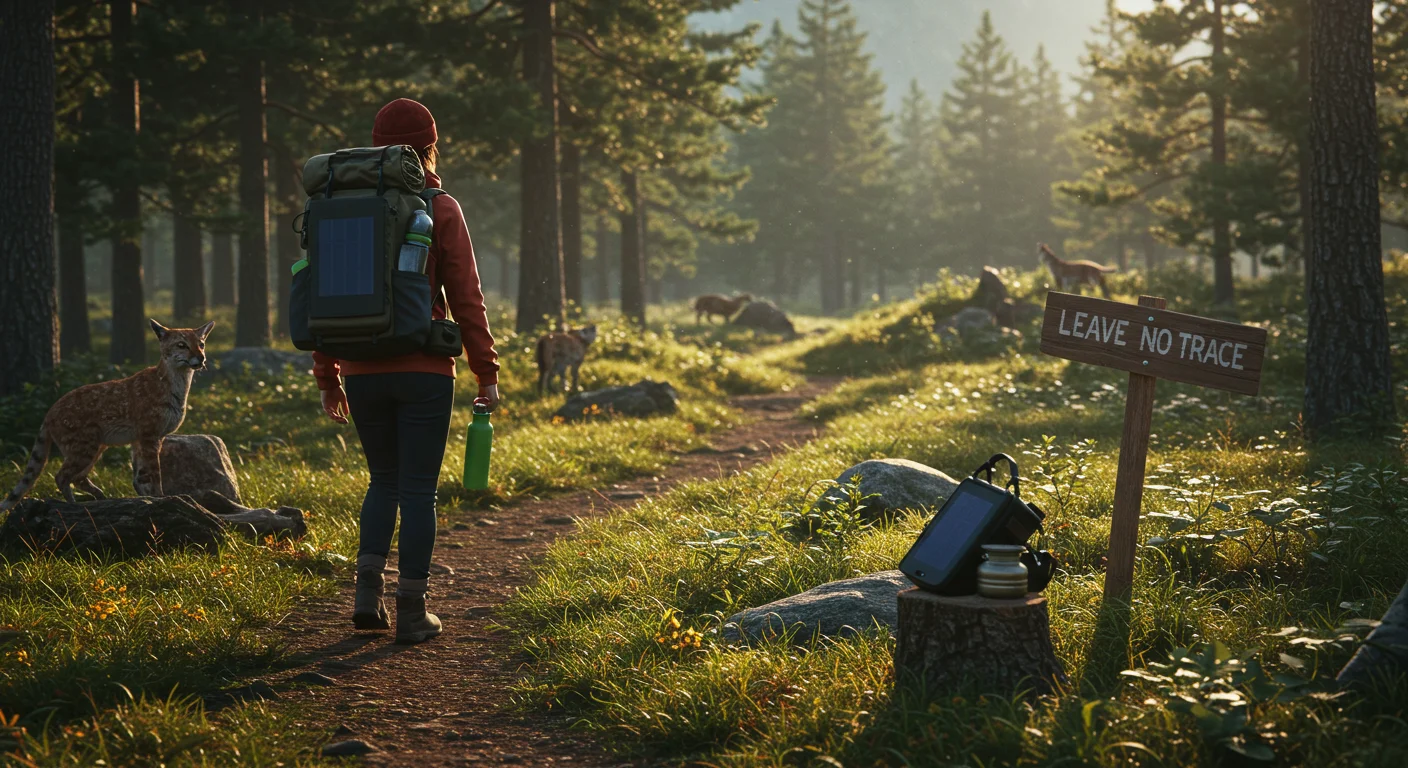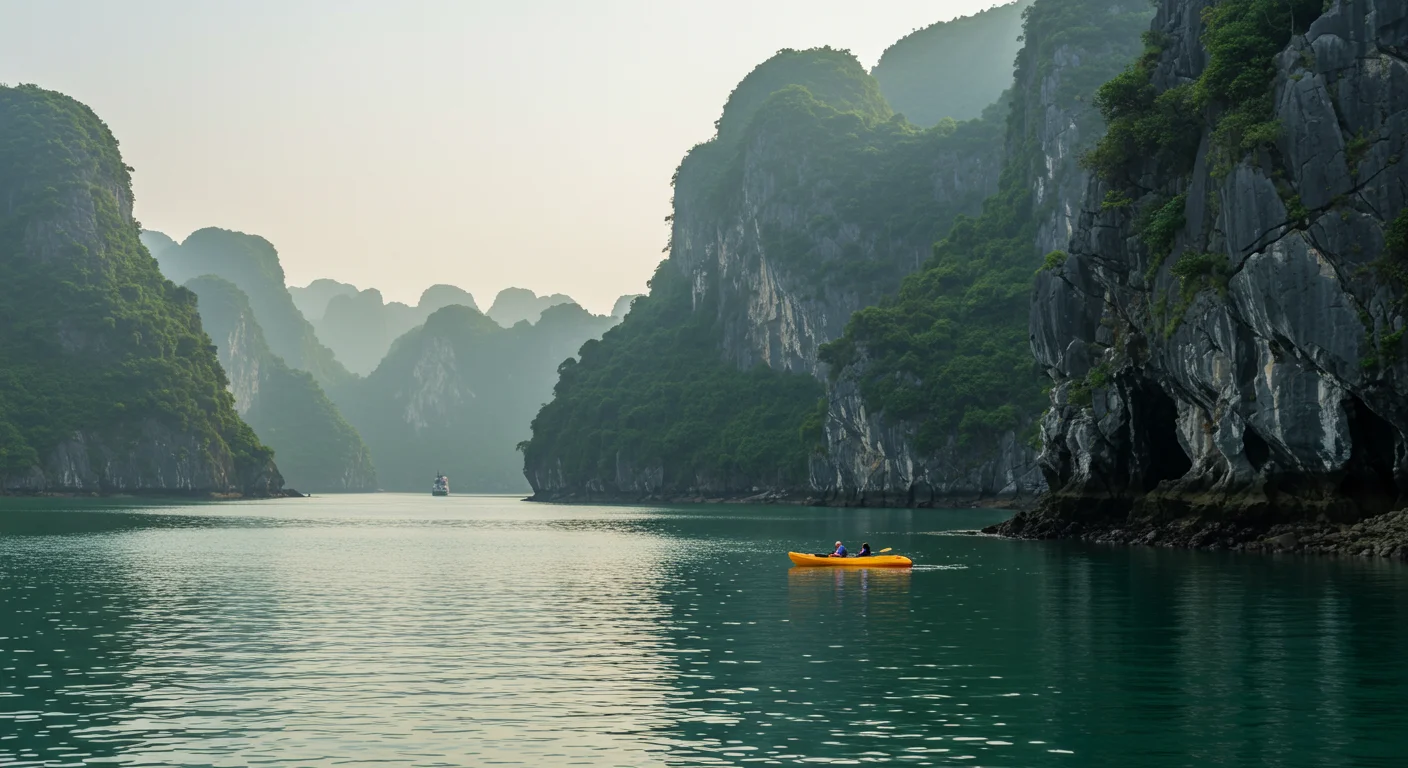Are you ready to stop taking ordinary photos of extraordinary places? When you visit famous sites like the Eiffel Tower or the Brooklyn Bridge, it’s easy to end up with pictures that look just like everyone else's. But what if you could make your photos stand out? This guide to Photographing Cultural Landmarks: Tips for Stunning Shots will show you simple tricks to capture truly unique and captivating images, making your travel memories truly special.
The Foundation of Unique Landmark Photos
To capture photos that truly pop, you need to think differently from the start. Instead of just pointing and shooting, consider how you can change your view and use light to your advantage. These small changes can make a huge difference in your travel photography, especially when Photographing Cultural Landmarks: Tips for Stunning Shots are your goal.
Embrace New Perspectives
Most people take photos standing up, at eye level. But by simply changing how you look at a landmark, you can create something much more interesting. This is a key part of making your photos unique.
Wide-Angle Wonders
Imagine using a super wide lens, like a 15mm on a big camera or a 10mm on a smaller one. This type of lens makes things look a bit stretched and curvy, giving your photos a dream-like feeling. For example, getting really close to the Brooklyn Bridge railing with a wide lens makes the bridge look huge and powerful, while the city in the background seems tiny. This distortion creates a completely different picture than what you would get with a normal camera lens.
Highs and Lows
Don't be afraid to look up high or get down low. Try shooting from below, like a frog looking up at a tall building. Or find a high spot, like a church tower or an observation deck, to capture wide city views and cool patterns. For instance, looking up at the Chrysler Building in New York can reveal reflections of other famous buildings that you might never notice otherwise. Even hiking up to a high point, like at Machu Picchu, can offer breathtaking views once the clouds clear.
Framing with Layers
Our world is three-dimensional, but photos are flat. To make your pictures feel deep and real, add layers. Think about having something close to you (the foreground), something in the middle, and your landmark far away in the background. This could mean shooting through a window or a doorway, like looking through the bars at Alcatraz. These layers make the viewer feel like they are peeking into the scene and add a sense of place. Even subtle things like blurred bars in the foreground can create this feeling of depth.
Master the Light
Light is everything in photography. The time of day you shoot can completely change the mood and look of your photos. Knowing when and how to use natural and artificial light is crucial when Photographing Cultural Landmarks: Tips for Stunning Shots.
Golden and Blue Hours
The "golden hour" is the magical time just after sunrise and before sunset. The light is soft and warm, making colors look rich and beautiful. Then, there's the "blue hour," right after sunset, when the sky turns a deep, rich blue. This is perfect for city shots, as the blue sky mixes wonderfully with city lights, making illuminated buildings sparkle. Most tourists go inside for dinner at these times, so you get a quieter scene and unique lighting.
Nighttime Magic
While many people pack up their cameras when the sun goes down, cities truly come alive at night. With all the lights, moving cars, and general buzz, nighttime offers fantastic photo opportunities. Famous spots like the Bellagio fountain in Las Vegas are much more exciting and sparkling after dark. Capturing these moments will give you photos that most visitors won't have, adding a unique touch to your collection.
Playing with Reflections and Light Trails
Look for reflections in puddles, rivers, or lakes. These can create amazing mirror images and add an artistic flair to your photos. You can even flip the image 180 degrees for a surprising effect. At night, especially in busy cities, set your camera on a tripod and use a long exposure (like 10 seconds). This will turn car lights into bright, exciting light trails, making your city scenes dynamic and full of motion.
Adding Life and Story to Your Shots
Landmarks are interesting, but they become even more captivating when they tell a story. Adding elements that provide context, life, and a sense of connection can elevate your pictures from simple snapshots to powerful narratives. This is where your personal touch truly shines when Photographing Cultural Landmarks: Tips for Stunning Shots.
The Human Touch
Cities are full of people, and including them in your photos can make the scene feel real and alive. A city photo without people can sometimes look empty or even a little eerie.
People as Storytellers
A few well-placed people can add a focal point and a sense of life to your landmark photos. They help tell the story of the place and what it’s like to live there. Think about capturing people walking by, a street vendor, or even a couple holding hands. You don't need to see every detail of their faces to feel their story. Even a simple shot of a student watching the sunset on a bridge can add a deep, human connection to your memory of a place.
Embracing or Avoiding Crowds
Crowds can be a challenge at popular landmarks, but you have options. The easiest way to avoid them is to travel during the off-season (avoiding summer) or wake up extra early before other tourists. This gives you quiet moments and beautiful morning light. If crowds are unavoidable, embrace them! Use them as layers in your photo, placing them along the bottom or sides of your frame without making them the main focus. You can even compose your shot by having the crowd at the bottom, the landmark in the middle, and the sky at the top, drawing the viewer's eye to the main subject.
Focus on the Finer Details
Sometimes, the most compelling photos are not of the entire landmark, but of its tiny, unique parts. This approach makes your pictures stand out from the typical postcard views, giving a fresh take on Photographing Cultural Landmarks: Tips for Stunning Shots.
Beyond the Whole Picture
It's tempting to try and fit a whole landmark into your photo, but this often makes it look small and unimpressive. Instead, zoom in on interesting details. Since famous landmarks are so well-known, people will still recognize them even if you only capture a part. Focus on a unique pattern on a building, a face on a sculpture, or even a rusted bolt on a bridge. These close-up shots can be more abstract and intriguing.
Unexpected Elements
Look for beauty in small, often overlooked things. Colorful flowers on a balcony, a beautifully arranged shop window, or sizzling street food at a market can add a personal touch to your city photos. Even finding the city's name on a street sign or a souvenir can add a storytelling element and visual variety to your collection. These little discoveries help make your photos truly original.
Gear and Post-Processing for Perfection
While creativity is key, having the right tools and knowing how to refine your images afterwards can make a big difference. Whether you're using a smartphone or a professional camera, understanding your equipment and editing options is vital for Photographing Cultural Landmarks: Tips for Stunning Shots.
Choosing the Right Tools
You don't need the fanciest camera to take amazing photos, but knowing what different lenses do can help a lot.
Lenses for Every Scenario
For professional cameras, different lenses serve different purposes. Wide-angle lenses (like 14-35mm) are great for landscapes and narrow streets because they keep most of the background in focus. Medium lenses (35-85mm) are versatile, good for capturing both the landmark and its details, often blurring the background nicely to make your main subject pop. Telephoto lenses (85mm and up) bring distant subjects closer and are excellent for isolating a landmark from far away, but they can be tricky to hold steady and are heavier. If you're using a phone, remember that today's phones are powerful. You can turn on grid lines for better composition (like the rule of thirds) and even shoot in RAW mode. RAW captures more image data, giving you much more freedom to edit later without losing quality, especially in tough lighting situations. Make sure to capture natural light by turning off filters and portrait mode when photographing landmarks, as portrait mode can blur important background details.
Phone Power
Modern smartphones are incredibly capable. Always remember to turn on grid lines in your phone's camera settings. These lines help you compose your shots using the rule of thirds, which makes your photos look balanced and professional. Also, enable RAW photo capture if your phone has it. RAW files are uncompressed and contain all the image data, giving you more flexibility when editing. For capturing the true essence of landmarks, avoid using filters or portrait mode directly on your phone camera, as they can sometimes hide the intricate details in the background that make a landmark unique. Natural lighting is your best friend here.
Elevating Your Images with Editing
Taking the photo is just the first step. Editing is where you can truly transform your image and bring your artistic vision to life, ensuring your work on Photographing Cultural Landmarks: Tips for Stunning Shots reaches its full potential.
Mobile and Desktop Enhancements
Whether you're editing on your phone or a computer, powerful tools are available. On your phone, you can experiment with tones: increase exposure to brighten, then carefully lower highlights and whites to bring out details. Boost shadows and contrast for texture and depth. Adjust saturation and vibrancy to make colors pop, but be careful not to overdo it, especially with cloudy skies. For professional camera photos, software like Lightroom on a computer is highly recommended. It excels at processing RAW files, giving you full control over your edits. Lightroom helps you correct imperfections, enhance your story, and apply a consistent style across many photos with presets. There are countless online tutorials to help you learn its powerful features.
Make Your Mark with Every Shot
Photographing Cultural Landmarks: Tips for Stunning Shots is not just about the camera you use; it's about your perspective, your creativity, and the story you want to tell. By embracing new angles, mastering light, including human elements, focusing on details, and making smart choices with your gear and editing, you can transform ordinary travel photos into extraordinary works of art.
Don't just capture a scene; capture a feeling, a moment, a memory that stands out. Remember, the goal is to have fun and let your unique view of the world shine through. So, next time you're exploring a famous landmark, step back, look around, and let your imagination guide your lens.




